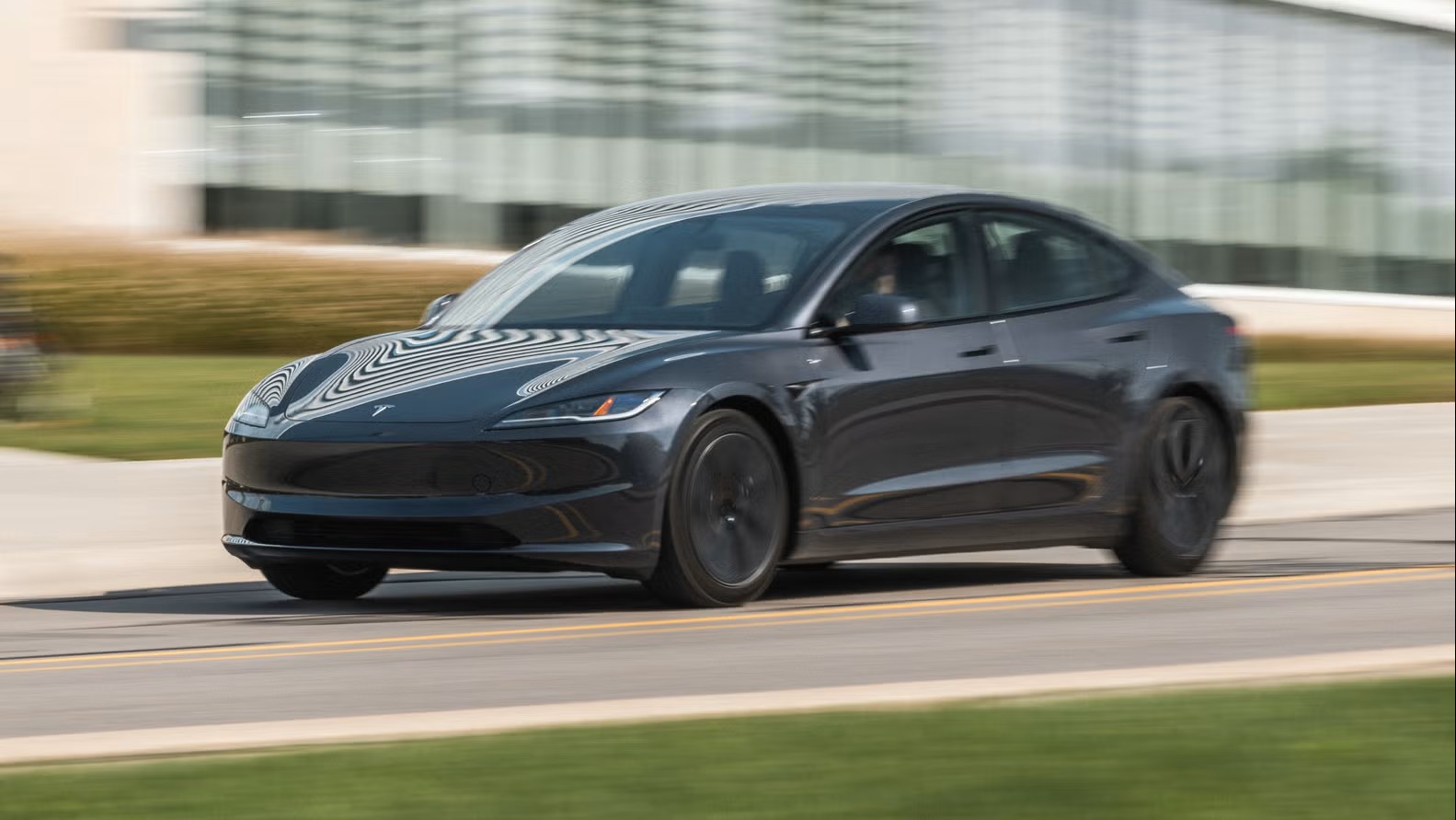In the rapidly evolving world of automotive technology, smart cruise control systems have emerged as one of the most significant advancements in driver assistance features.
These sophisticated systems, often referred to as adaptive cruise control (ACC) or intelligent cruise control, go far beyond the traditional cruise control functionality by automatically adjusting the vehicle’s speed to maintain a safe distance from the car ahead.
The most advanced iterations now incorporate lane-keeping assistance, traffic jam capabilities, and even predictive features that can anticipate road conditions or traffic patterns. As we move toward a future of increasing vehicle autonomy, the quality and capabilities of these systems have become key differentiators between automotive brands and models.
This article explores five vehicles at the forefront of smart cruise control technology, showcasing manufacturers who have prioritized this innovation, and contrasts them with five vehicles whose systems notably lag behind industry standards.
Whether you’re prioritizing safety features in your next vehicle purchase or simply interested in the cutting edge of automotive technology, understanding these distinctions can provide valuable insight into how different manufacturers are approaching the semi-autonomous driving experience.
5 Vehicles with Outstanding Smart Cruise Control
These advanced models feature intuitive adaptive cruise systems that seamlessly adjust speed while maintaining safe distances, transforming stressful commutes into relaxing journeys.
Their sophisticated sensors and responsive software create a natural driving experience that gracefully goes through the varying traffic conditions without jerky acceleration or harsh braking.
From stop-and-go traffic capabilities to highway cruising, these intelligent systems represent the pinnacle of cruise control technology that actually enhances driver confidence.
1. Tesla Model 3
The Tesla Model 3 stands as the benchmark for advanced smart cruise control systems, featuring the company’s Autopilot technology that has continuously evolved through over-the-air updates.
The core of this system is a sophisticated network of eight external cameras, twelve ultrasonic sensors, and forward-facing radar that work in concert to create a comprehensive view of the vehicle’s surroundings.
Unlike many competitors that rely primarily on radar, Tesla’s vision-based approach enables more nuanced interpretation of the driving environment. The Model 3’s Traffic-Aware Cruise Control goes beyond simply maintaining distance from the vehicle ahead by intelligently responding to traffic flow patterns.
The system can bring the car to a complete stop in traffic and automatically resume driving when traffic moves, eliminating the need for driver intervention during congested commutes.
This functionality is enhanced by Go through on Autopilot, which allows the vehicle to suggest and execute lane changes, go through highway interchanges, and take exits with minimal driver input.
Perhaps most impressively, the Model 3’s smart cruise control features predictive capabilities that can anticipate the movements of surrounding vehicles based on their positioning and speed.
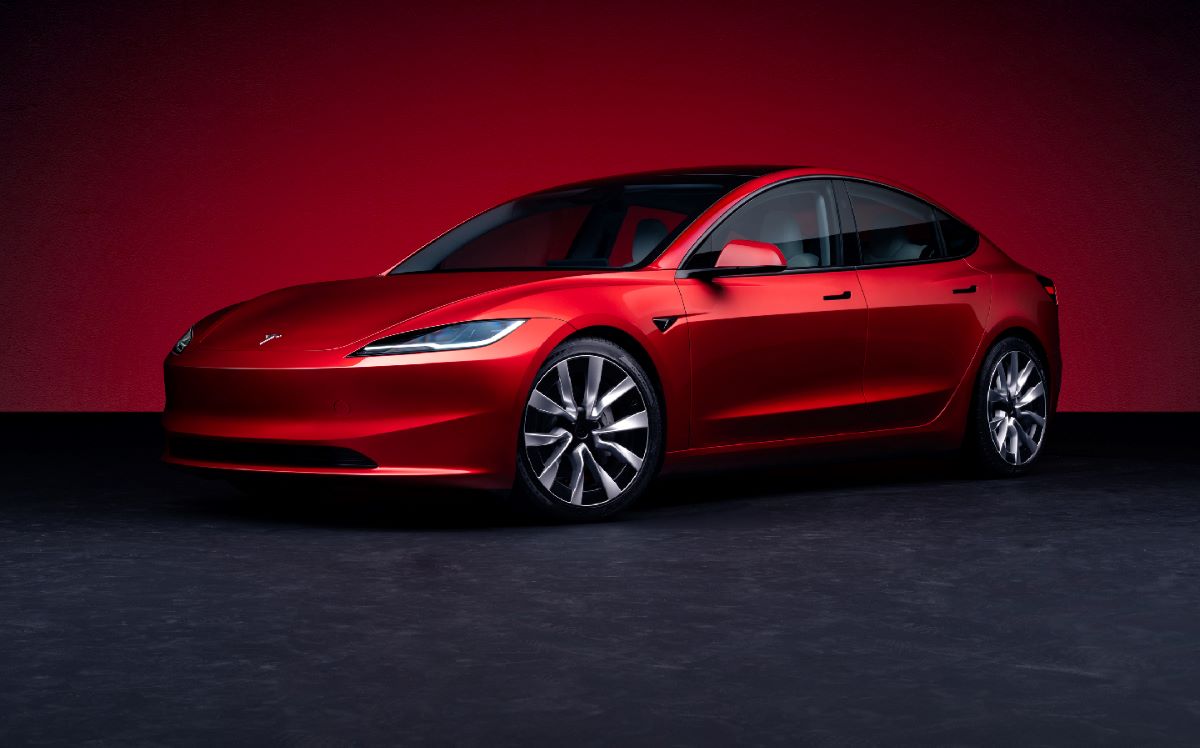
This predictive functionality allows the system to respond more naturally to complex traffic situations, such as vehicles merging from on-ramps or sudden slowdowns ahead.
The system also showcases remarkable smoothness in acceleration and deceleration profiles, avoiding the jerky responses that plague less sophisticated systems.
Tesla continues to push the boundaries of what’s possible with regular software updates that refine existing capabilities and introduce new features.
Recent updates have improved the system’s behavior in construction zones and enhanced its ability to recognize and respond appropriately to traffic signals and stop signs, though these features require driver confirmation.
The intuitive driver monitoring system ensures safety by requiring periodic steering wheel input, striking a balance between assistance and maintaining driver engagement.
While Tesla’s marketing has sometimes caused confusion about the system’s capabilities, the practical reality is that the Model 3 offers one of the most comprehensive, reliable, and user-friendly smart cruise control experiences available in any consumer vehicle today.
Its ability to handle complex driving scenarios with minimal driver intervention places it firmly at the leading edge of automotive technology.
2. Mercedes-Benz S-Class
The Mercedes-Benz S-Class has long been the standard-bearer for luxury automotive innovation, and its Distronic Plus with Steering Assist system represents one of the most refined smart cruise control implementations available today.
The S-Class approaches this technology with a distinctly Mercedes philosophy: sophisticated engineering paired with an emphasis on comfort, safety, and driver confidence.
The system utilizes a multi-modal sensor array that combines long and mid-range radar, stereo cameras, and ultrasonic sensors to create a detailed digital model of the surrounding environment.
This sensor fusion approach allows the S-Class to maintain precise distance control even in challenging weather conditions where single-sensor systems might falter. The radar components can detect vehicles up to 250 meters ahead, giving the system ample time to react to changes in traffic flow smoothly and predictably.
Where the S-Class truly distinguishes itself is in the exceptional refinement of its implementation. The acceleration and braking profiles have been meticulously calibrated to mimic the smooth, progressive inputs of a skilled chauffeur.
Even during emergency slowdowns, the system applies brake pressure gradually at first before increasing force if needed, avoiding abrupt transitions that might disturb passengers.
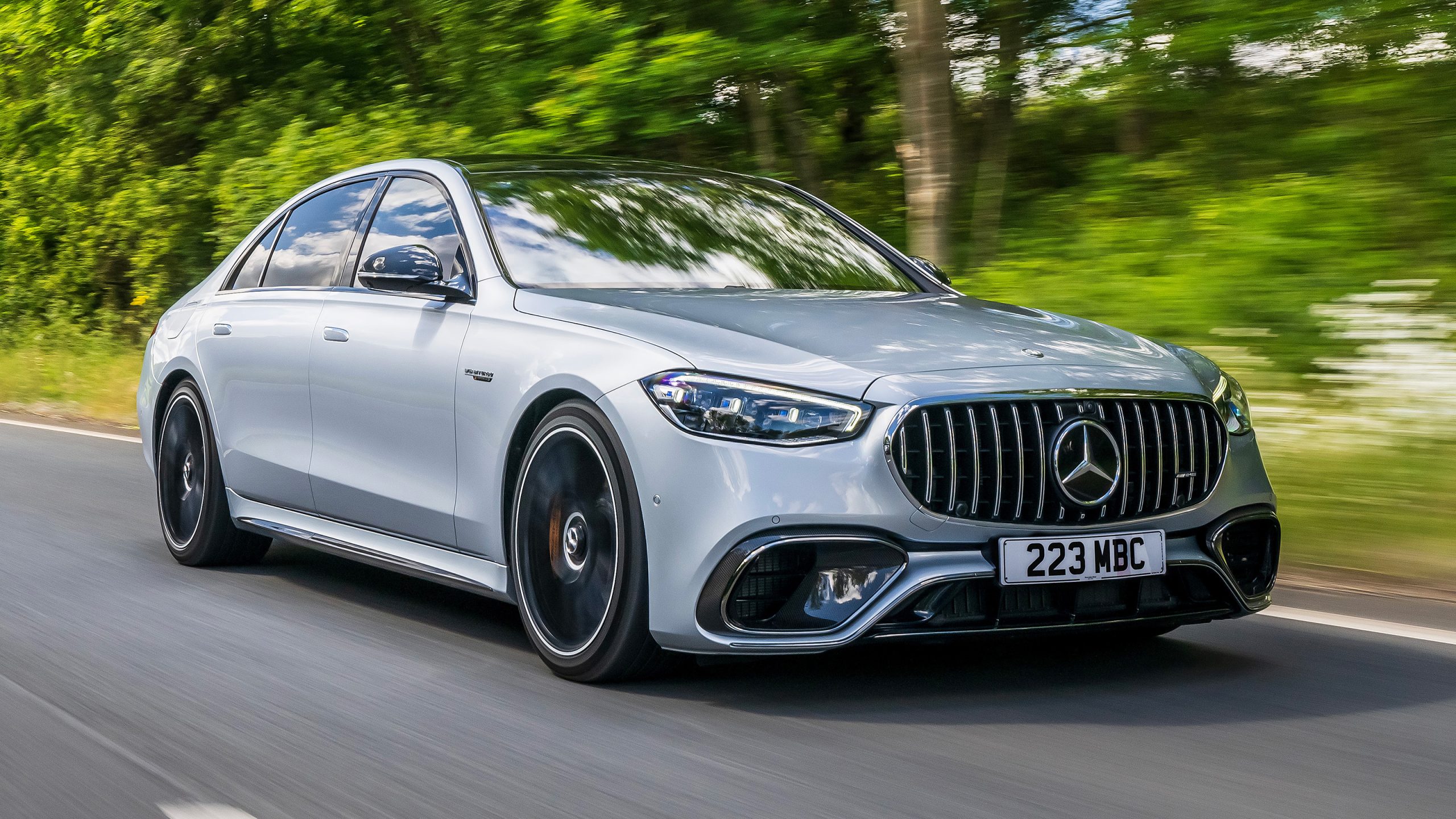
This attention to comfort doesn’t compromise responsiveness; the system can react to sudden traffic stops within milliseconds. The integration of navigation data raised the S-Class’s smart cruise control beyond mere reactivity.
The system can proactively reduce speed when approaching sharp curves, roundabouts, or exit ramps, then smoothly accelerate once the vehicle clears these features.
In traffic jam situations, the Active Stop-and-Go Assist can handle stop-and-go traffic for extended periods, maintaining lane position even around gentle curves and continuously monitoring for openings in congestion.
Mercedes has also implemented sophisticated communication between vehicle systems. For instance, if the blind spot monitoring system detects a vehicle in an adjacent lane, the smart cruise control will temporarily delay an automatic lane change until the path is clear. This holistic approach to driver assistance creates a more cohesive and trustworthy experience.
Perhaps most impressively, the S-Class’s system learns from the driver’s habits over time. After sufficient use, it adapts acceleration profiles and following distances to better match the owner’s driving style while still maintaining fundamental safety parameters.
This personalization layer demonstrates Mercedes’ understanding that driver assistance systems must complement rather than replace the human driving experience, particularly for enthusiast owners who choose flagship luxury vehicles like the S-Class.
3. Hyundai Ioniq 5
The Hyundai Ioniq 5 represents the democratization of sophisticated smart cruise control technology, bringing premium capabilities to a more accessible price point.
Its Highway Driving Assist II (HDA II) system exemplifies how rapidly Korean manufacturers have closed the gap with luxury brands, offering functionality that would have been unimaginable in a mainstream vehicle just a few years ago.
HDA II employs a forward-facing camera, front radar, and an array of ultrasonic sensors to maintain precise distance control from the vehicle ahead while keeping the Ioniq 5 centered in its lane.
Unlike more basic systems that struggle with sharper curves, the Ioniq 5’s lane centering remains smooth and consistent even on winding highways. The system’s camera can recognize lane markings across various road conditions and lighting scenarios, maintaining functionality even when lane markers are partially obscured or inconsistent.
One of the system’s most impressive capabilities is its ability to execute automatic lane changes with a simple tap of the turn signal. The vehicle will monitor adjacent lanes for a safe opening, then smoothly transition to the desired lane while maintaining appropriate speed and distance from surrounding traffic.
This feature typically found only in luxury vehicles costing twice as much showcases Hyundai’s commitment to bringing advanced technology to the mainstream market.
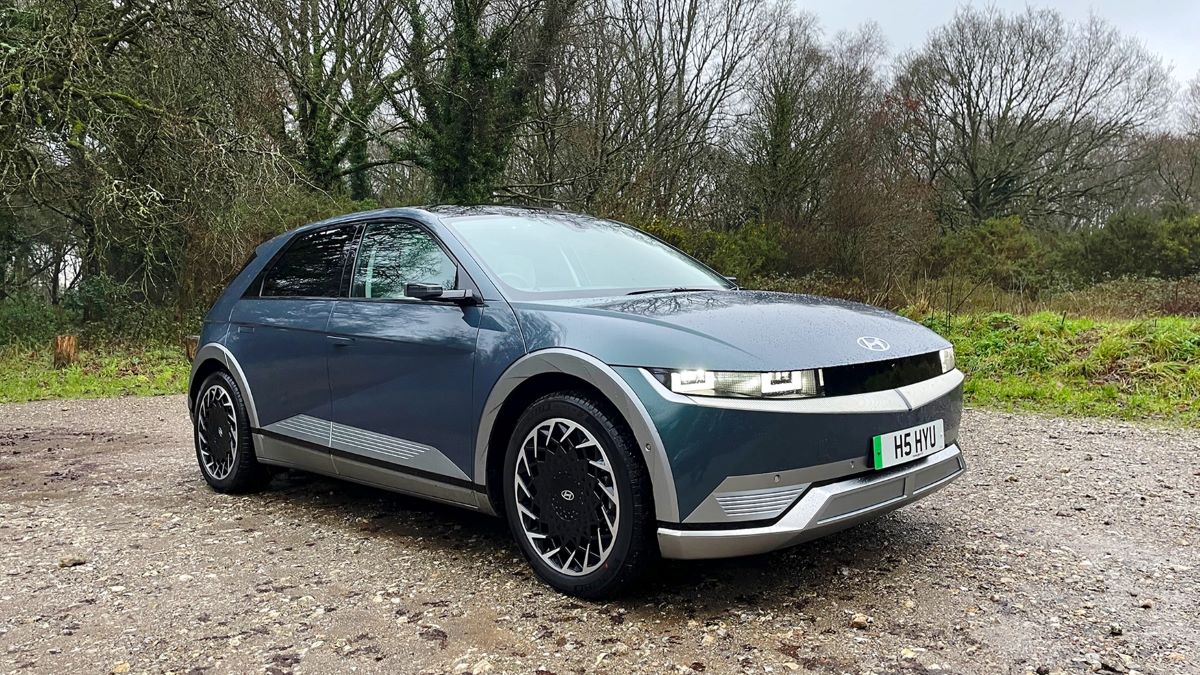
The Ioniq 5’s smart cruise control also features machine learning capabilities that adapt to the driver’s habits. After analyzing acceleration patterns, following distance preferences, and reaction times, the system gradually customizes its behavior to match the driver’s style while maintaining safety parameters.
This personalization creates a more natural feeling experience that doesn’t force drivers to adapt to the technology’s limitations. In congested traffic situations, the system exhibits exceptional patience and predictability.
Unlike some competitors’ systems that disengage after a certain period at standstill, the Ioniq 5 can remain in smart cruise control mode indefinitely during stop-and-go traffic, reducing driver fatigue on lengthy commutes.
The reactivation from a complete stop is particularly smooth, with none of the hesitation or sudden acceleration that plagues less refined systems.
Hyundai has also focused on the human-machine interface aspects of the technology, with clear visual cues in both the digital instrument cluster and heads-up display indicating the system’s status and intentions.
Subtle audio cues provide additional feedback without becoming intrusive. This transparency helps build driver trust in the system’s capabilities and limitations, encouraging appropriate use of the technology.
The Ioniq 5’s smart cruise control demonstrates that sophisticated driver assistance features are no longer the exclusive domain of luxury brands.
By delivering capabilities previously associated with vehicles costing significantly more, Hyundai has established the Ioniq 5 as one of the most technologically advanced options in its segment and a compelling showcase for mainstream adoption of semi-autonomous driving features.
4. Audi A8
The Audi A8’s adaptive cruise assist system represents the culmination of the German manufacturer’s precision engineering approach to driver assistance technology.
The flagship sedan incorporates one of the most comprehensive sensor suites in any production vehicle, with front and rear radar units, lidar scanning, twelve ultrasonic sensors, and a front-facing camera working in concert to create an exceptionally detailed digital representation of the vehicle’s surroundings.
What distinguishes the A8’s system is its remarkable predictive capabilities. Unlike reactive systems that respond primarily to the vehicle immediately ahead, the A8 continuously analyzes multiple vehicles in its path to anticipate traffic flow changes before they directly impact the driving experience.
This predictive algorithm can detect when traffic is gradually slowing several cars ahead and initiate gentle deceleration well before the vehicle immediately in front applies its brakes, creating an exceptionally smooth and forward-thinking driving experience.
The A8’s approach to lane keeping further demonstrates Audi’s commitment to sophistication and subtlety. Rather than the more obvious ping-ponging between lane markers seen in less advanced systems, the A8 maintains a natural position within the lane that mimics an attentive human driver.
The system even slightly adjusts lane positioning when large trucks are nearby, maintaining a small buffer of additional space that mirrors instinctive human behavior. These nuanced touches create an experience that feels less artificial than many competing systems.
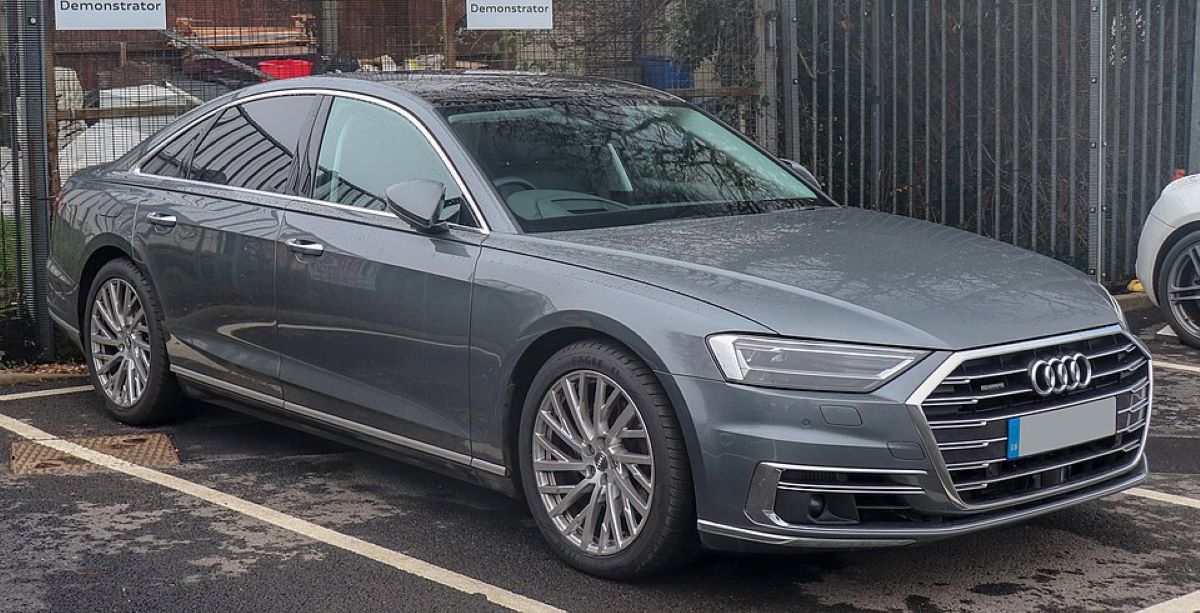
Integration with the vehicle’s navigation system enables the A8 to automatically adjust speed for upcoming curves, intersections, and speed limit changes without driver intervention.
The system can even recognize roundabouts and city entry points, adjusting vehicle speed accordingly. This predictive capability extends to traffic signs, which the camera system reads and interprets to inform cruise control behavior, such as temporary construction zone restrictions.
In traffic jam situations, the A8 showcases exceptional patience and consistency. The system can handle extended periods of stop-and-go driving without disengagement, maintaining appropriate distances that prevent the accordion effect that contributes to traffic congestion.
The reactivation from a complete stop is particularly refined, with none of the hesitation or abruptness common in less sophisticated implementations. Audi has paid special attention to the transitional moments when the system needs to hand control back to the driver.
Unlike abrupt disengagements that can create momentary confusion, the A8 provides escalating alerts and gradually reduces assistance, ensuring the driver has adequate time to regain situational awareness and control. This thoughtful approach to transitions demonstrates Audi’s holistic understanding of the human factors involved in semi-autonomous systems.
While the A8’s smart cruise control capabilities don’t fundamentally exceed those of some competitors, the exceptional integration, refinement, and predictive intelligence of its implementation create one of the most premium experiences available in any production vehicle.
For drivers who value subtle sophistication over technological showmanship, the A8 represents one of the most compelling options in the luxury segment.
Also Read: 5 Budget Cars That Save on Gas and 5 That Make It Worse
5. Nissan Ariya
The Nissan Ariya represents the culmination of Nissan’s long-standing commitment to driver assistance technology, building upon the foundation established by the ProPILOT system first introduced in 2016.
The Ariya’s ProPILOT 2.0 system demonstrates how mainstream manufacturers can deliver sophisticated smart cruise control capabilities through continuous refinement and thoughtful engineering.
The system utilizes a comprehensive sensor suite including front and side radar units, a high-definition front-facing camera, and a 3D mapping system that works in conjunction with GPS to create a multi-layered understanding of the vehicle’s position and surroundings.
This sensor fusion approach allows the Ariya to maintain precise vehicle control across a wide range of driving conditions, from clear highway driving to congested urban environments with inconsistent lane markings.
What distinguishes ProPILOT 2.0 from many competing systems is its hands-off capability on compatible highways (where legally permitted). Once the vehicle confirms it’s on a suitable road with clear lane markings and the driver has demonstrated attentiveness, the system allows for hands-off driving while maintaining consistent lane positioning and distance control.
n infrared driver monitoring camera ensures the driver remains focused on the road, striking a balance between convenience and safety that reflects Nissan’s pragmatic approach to semi-autonomous driving.
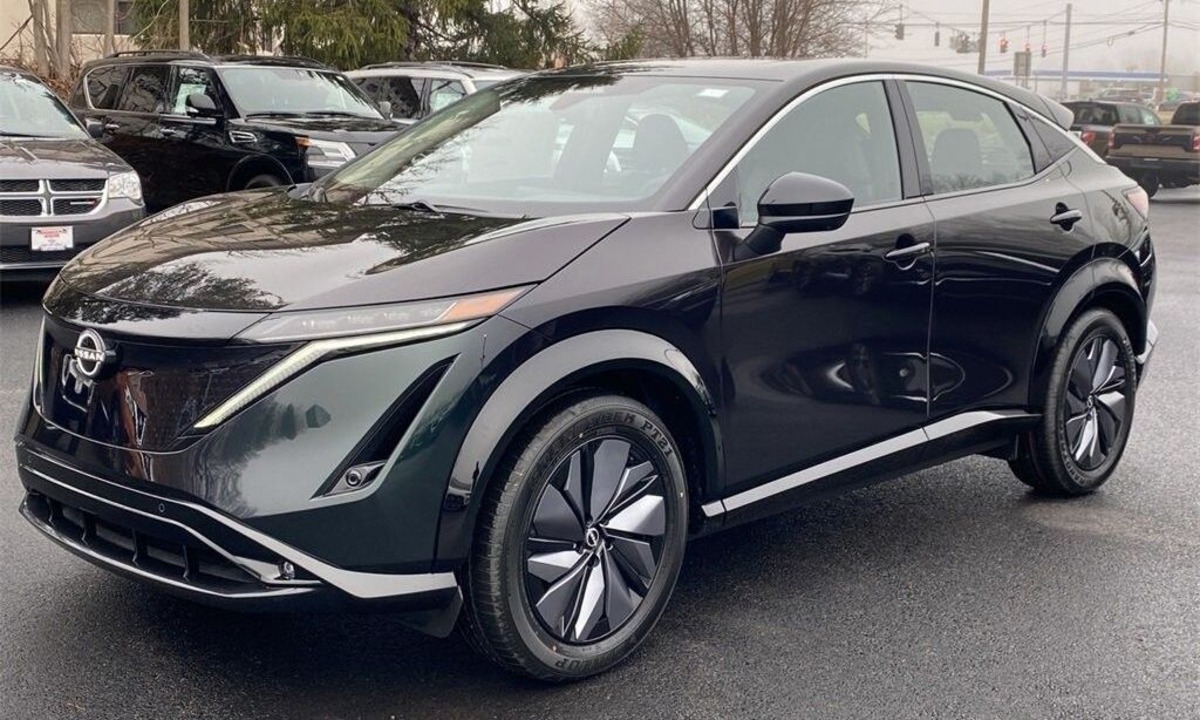
The Ariya’s navigation integration further enhances its smart cruise control capabilities. The system leverages high-definition map data to anticipate upcoming road features such as curves, interchanges, and merges, adjusting vehicle speed proactively rather than reactively.
This predictive capability creates a more natural driving experience, particularly on familiar commuting routes where the system can anticipate regular slowdown points before they become visible to the vehicle’s sensors.
In traffic jam scenarios, the Ariya demonstrates exceptional patience and consistency. The system can handle extended periods of stop-and-go driving without disengagement, and importantly, will remain active after a complete stop for up to 30 seconds before requiring driver reactivation.
This extended standstill capability makes the system particularly valuable in heavy commuter traffic, where frequent stops can quickly become fatiguing with less capable systems.
The human-machine interface deserves special mention, with clear visual indicators in both the instrument cluster and the optional head-up display providing immediate feedback on system status.
The transition between different levels of assistance is communicated through both visual and audible cues, ensuring the driver always understands the current state of the system, a critical factor in building appropriate trust in the technology.
Nissan has also focused on edge cases that challenge many smart cruise control systems. The Ariya handles scenarios like vehicles cutting in closely ahead with remarkable composure, applying smooth and measured braking rather than the sudden deceleration common in less sophisticated systems.
The camera system can detect not just vehicles but also motorcycles and cyclists, adjusting behavior appropriately for different road users. The Ariya’s ProPILOT 2.0 demonstrates that mainstream manufacturers can deliver smart cruise control experiences rivaling premium brands through focused development and iterative refinement.
By building upon years of real-world experience with earlier ProPILOT versions, Nissan has created one of the most trustworthy and capable systems available in its price range.
5 Vehicles with Subpar Smart Cruise Control
Despite manufacturer promises, these disappointing cruise control systems react too slowly to changing traffic conditions, creating anxiety-inducing gaps or uncomfortably close following distances.
Their jerky acceleration and abrupt braking patterns make passengers feel uneasy while draining efficiency benefits that properly tuned systems should provide.
Outdated technology and poor calibration leave these systems feeling more like prototype experiments than refined features, often prompting drivers to disengage them entirely during typical commutes.
1. Mitsubishi Outlander
The Mitsubishi Outlander’s Adaptive Cruise Control (ACC) system exemplifies the significant gap that can exist between entry-level implementations and industry-leading technology.
Despite marketing materials suggesting sophisticated capabilities, the Outlander’s system suffers from fundamental limitations that compromise its usefulness in real-world driving scenarios.
The system relies primarily on a single-radar sensor mounted in the front grille, lacking the multi-sensor fusion approach found in more advanced implementations.
This hardware limitation manifests in several problematic behaviors. Most notably, the Outlander’s ACC exhibits excessive caution when following other vehicles, maintaining a following distance significantly larger than necessary, even in its closest setting.
While safety margins are essential, the system’s exaggerated spacing often allows other vehicles to cut in between, triggering frequent unnecessary braking events that create a jerky, unpredictable experience for both driver and passengers.
The Outlander’s ACC also demonstrates poor situational awareness regarding surrounding traffic. When a vehicle ahead changes lanes to reveal a slower vehicle further ahead, the system often reacts with abrupt braking rather than gradually adjusting to the new target vehicle.
This lack of predictive capability creates an experience that feels reactive and mechanical rather than smooth and anticipatory. Similarly, when a vehicle merges into the lane ahead, the system frequently overreacts with excessive braking force rather than making measured adjustments.

Perhaps most frustratingly, the Outlander’s system suffers from significant operational limitations. The minimum activation speed of 25 mph renders it ineffective in stop-and-go traffic, precisely the scenario where cruise control assistance would be most beneficial for reducing driver fatigue.
Moreover, the system automatically disengages below 20 mph, requiring manual driver intervention to bring the vehicle to a complete stop when traffic slows significantly. These limitations severely compromise the utility of the system in everyday commuting scenarios.
Lane-keeping assistance, when paired with ACC, demonstrates similar limitations. The system provides only basic lane departure warning with gentle steering assistance rather than true lane centering.
On anything but perfectly marked, gentle curves, the system struggles to maintain consistent lane positioning, often requiring driver intervention. The transition between assisted and manual driving is particularly problematic, with abrupt disengagement that can catch drivers unprepared.
The human-machine interface further compounds these issues. System status is communicated through small icons in the instrument cluster that provide limited information about the current state of the system.
The controls for adjusting following distance and set speed feel unintuitive compared to more refined implementations, requiring drivers to go through multiple menus for simple adjustments. This interface complexity increases cognitive load rather than reducing it, contrary to the fundamental purpose of driver assistance systems.
While the Outlander’s ACC represents a tentative step into driver assistance technology, its implementation feels more like a feature checklist item than a thoughtfully engineered system.
The fundamental limitations in hardware, software algorithms, and user interface create an experience that may increase driver workload in many scenarios rather than reducing it, highlighting the significant development gap between Mitsubishi and manufacturers who have prioritized these technologies.
2. Jeep Compass
The Jeep Compass offers an adaptive cruise control system that, while functional in basic scenarios, falls notably short of current industry standards. Its limitations become particularly apparent when compared to systems in similarly priced competitors, suggesting that advanced driver assistance has not been a development priority for this compact SUV.
The system’s most significant shortcoming lies in its limited operational range. The Compass’s adaptive cruise control functions only down to approximately 15 mph before automatically disengaging, requiring the driver to take over braking responsibilities as traffic slows.
This partial automation creates a particularly awkward transition point in gradually slowing traffic, where the system disengages precisely when driver assistance would be most beneficial.
Unlike more advanced systems that can bring the vehicle to a complete stop and resume automatically when traffic moves, the Compass forces drivers to constantly toggle between assisted and manual driving in congested conditions.
The single-radar sensor implementation further limits the system’s capabilities. The narrow field of vision means the Compass can only track vehicles directly ahead, with no awareness of adjacent lanes or vehicles that might be merging.
This tunnel vision approach results in abrupt braking when vehicles change lanes into the path of the Compass, rather than the gradual, anticipatory responses seen in multi-sensor systems.
The radar’s limited range also means the system reacts to obstacles relatively late, necessitating sharper braking profiles that diminish passenger comfort.
Lane-keeping assistance, when paired with adaptive cruise control, demonstrates similar basic functionality. Rather than actively centering the vehicle in the lane, the system provides only modest corrective steering when the vehicle approaches lane markings.
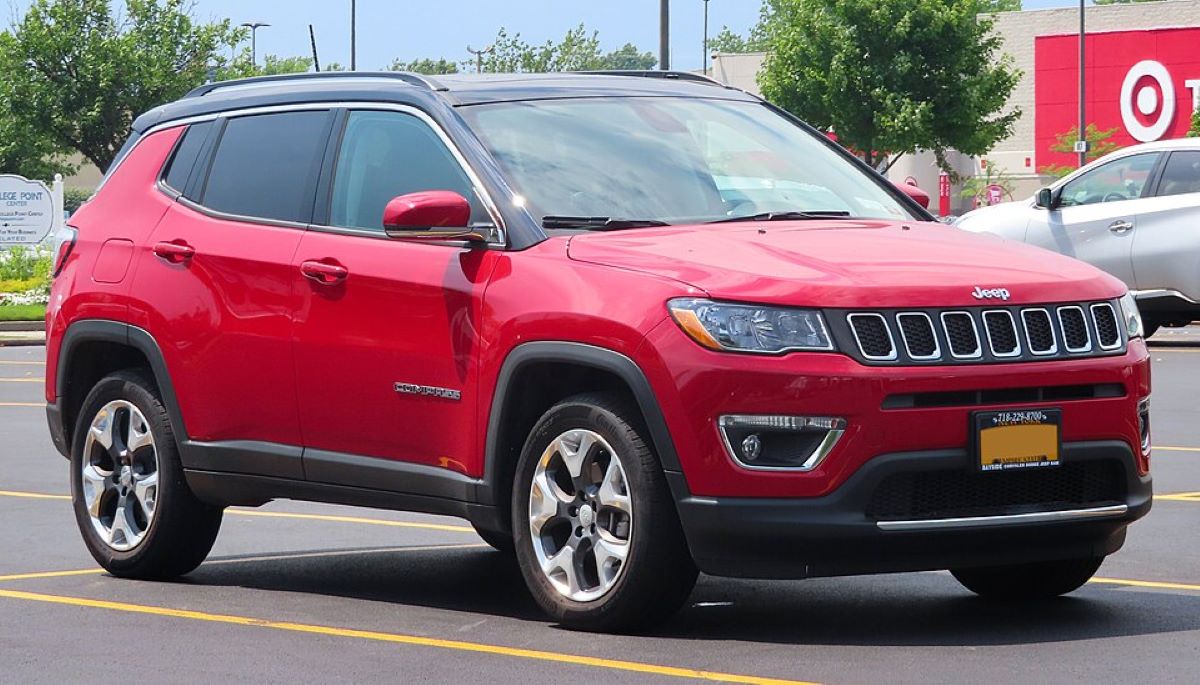
This reactive approach results in a wandering path within the lane that requires regular driver corrections, defeating much of the fatigue-reduction benefit that these systems should provide.
On curves of any significant degree, the system typically requires driver intervention, limiting its usefulness to relatively straight highway sections. The interface for controlling the system adds another layer of frustration.
Adjusting following distance requires going through multiple menu screens rather than dedicated physical controls, creating an unnecessarily complex interaction that diverts attention from the road.
The system also provides minimal visual feedback about its operating status beyond basic engagement indicators, leaving drivers with limited information about when interventions might be necessary.
Perhaps most tellingly, the Compass’s adaptive cruise control exhibits little evidence of refinement through real-world testing. The braking profile remains abrupt rather than progressive, acceleration from a set speed often feels hesitant, then sudden, and the system occasionally “loses” the target vehicle on hills or in light rain conditions.
These behaviors suggest a basic implementation that meets minimum functional requirements rather than a system developed through extensive real-world scenario testing.
While the Compass offers adequate adaptive cruise control for occasional use on uncongested highways with minimal complexity, it falls significantly short of the seamless assistance that has become available even in similarly priced mainstream competitors.
The system’s limitations reflect a broader approach to technology implementation that prioritizes feature list inclusion over refined, practical functionality a particularly notable shortcoming in a segment where sophisticated driver assistance has increasingly become an expected feature rather than a luxury add-on.
3. Chevrolet Trax
The Chevrolet Trax represents a particularly disappointing implementation of smart cruise control technology, with significant limitations that severely compromise its practical utility.
As one of General Motors’ entry-level offerings, the Trax demonstrates how fundamentally different the driver assistance experience can be compared to more developed systems, even within vehicles at similar price points.
The most immediate limitation becomes apparent in the system’s operational parameters. The Trax’s adaptive cruise control functions only above 25 mph and automatically disengages when the vehicle speed drops below this threshold.
This significant restriction renders the system essentially useless in urban environments or congested highways, precisely the scenarios where driver assistance would provide the greatest benefit.
Unlike systems that can operate in stop-and-go traffic, the Trax forces drivers to constantly transition between manual and assisted driving, potentially increasing cognitive load rather than reducing it.
The hardware implementation further constrains performance. The Trax utilizes a basic single-radar sensor with a relatively narrow field of view, limiting the system’s ability to track multiple vehicles or detect objects entering its path from adjacent lanes. This hardware limitation manifests in delayed responses to vehicles merging ahead, often resulting in more abrupt braking than necessary.
The system also demonstrates poor performance in adverse weather, with significantly reduced functionality in rain and complete deactivation in moderate snow conditions.
Lane-keeping assistance, when paired with adaptive cruise control, provides only the most basic functionality. Rather than actively maintaining lane position, the system offers rudimentary lane departure warning with minimal steering intervention.
On anything but perfectly straight highway sections with clear markings, the system requires constant driver adjustment, failing to deliver the reduced workload that more sophisticated systems provide. The transition between assisted and manual steering feels particularly unnatural, with an abrupt handoff that can momentarily disorient drivers.
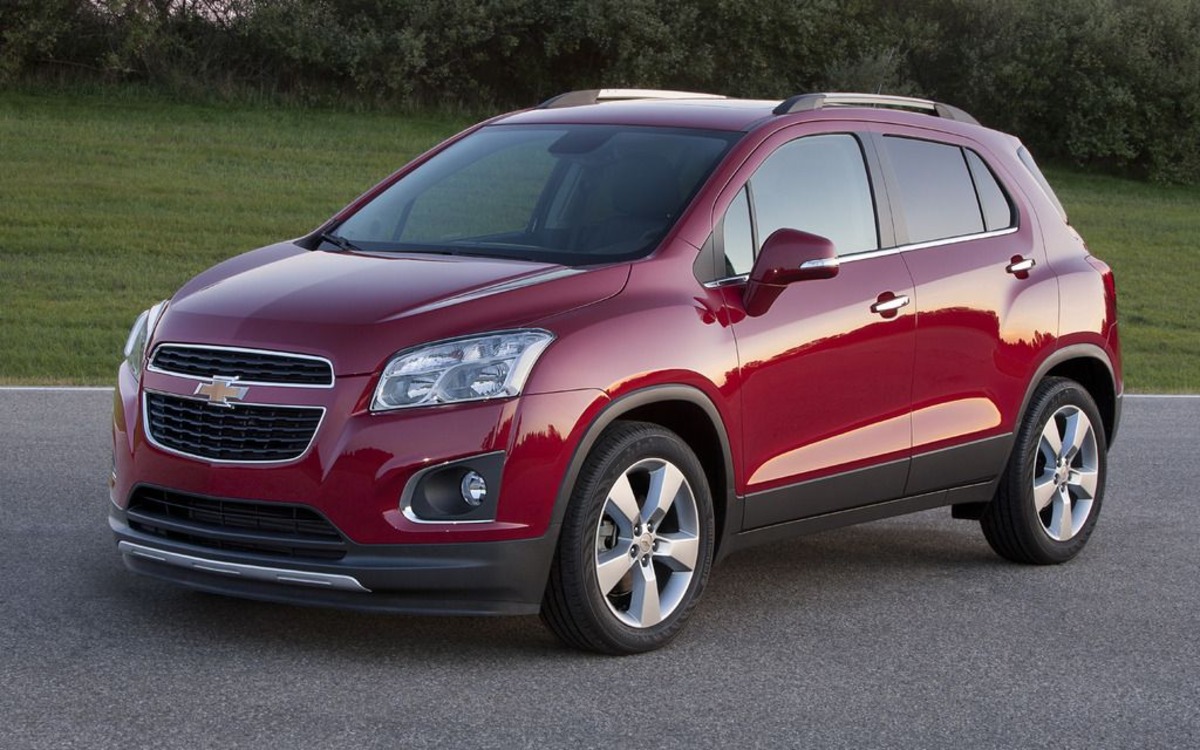
The system’s behavior when following other vehicles reveals additional shortcomings. Acceleration and deceleration profiles lack refinement, with a tendency toward abrupt changes rather than smooth, progressive adjustments.
Following distance settings are limited to three fixed options that fail to account for different traffic conditions or driving preferences. Even at the closest setting, the gap maintained often allows other vehicles to merge ahead, triggering unnecessary braking events that create a jerky, unpredictable experience.
The human-machine interface compounds these limitations. System controls are integrated into the multifunction steering wheel with minimal dedicated buttons, requiring drivers to go through multiple menu screens for basic adjustments.
Visual feedback about system status is limited to small icons in the instrument cluster that provide little context about current operation or potential limitations. This interface opacity makes it difficult for drivers to build appropriate trust in the system’s capabilities and anticipate necessary interventions.
Perhaps most tellingly, the system shows minimal evidence of iteration based on real-world usage patterns. The fundamental behavior remains unchanged since its introduction, with none of the refinement through software updates that has become common among manufacturers who prioritize driver assistance technology.
This static implementation suggests that adaptive cruise control was implemented primarily as a feature list item rather than as a core technology deserving of ongoing development resources.
While the Trax offers nominally “adaptive” cruise control, its implementation falls significantly short of contemporary standards for functionality, refinement, and usability. For drivers seeking meaningful assistance in reducing fatigue during regular commuting, the system’s limitations make it more of a marketing checkbox than a practical driving aid.
4. Subaru Crosstrek
The Subaru Crosstrek’s EyeSight driver assistance system, while pioneering when first introduced, now reveals the limitations of an aging architecture that has fallen behind contemporary implementations.
Despite Subaru’s strong reputation for safety features, the Crosstrek’s smart cruise control demonstrates several shortcomings that diminish its effectiveness in daily driving scenarios.
Unlike radar-based systems found in most competitors, the Crosstrek relies exclusively on a stereo camera setup positioned near the rearview mirror. While this camera-only approach offers certain advantages in detecting lane markings and potential hazards, it introduces significant limitations in adverse conditions.
The system becomes compromised or completely non-functional in heavy rain, fog, or snow, precisely when driver assistance would be most valuable. Even bright sunlight at low angles can temporarily blind the cameras, causing unexpected system disengagement with minimal warning to the driver.
The Crosstrek’s adaptive cruise control exhibits particularly conservative behavior that prioritizes caution over smoothness. The following distances remain noticeably larger than necessary, even in the closest setting, creating gaps that invite other vehicles to merge ahead.
When such cut-ins occur, the system typically responds with more aggressive braking than necessary, creating an uneven, jerky experience for occupants. This conservative calibration extends to acceleration profiles as well, with the system responding sluggishly when traffic ahead clears, creating potential frustration for drivers and trailing vehicles alike.
While the system can bring the vehicle to a complete stop in traffic, it requires driver intervention to resume forward movement after stops lasting more than a few seconds. This limitation creates an awkward hybrid experience in stop-and-go traffic, requiring constant driver attention to restart the system rather than providing the seamless assistance offered by more advanced implementations.
The transition between stopped and moving states lacks refinement, with occasionally abrupt acceleration that contrasts with the smoother profiles of newer systems.
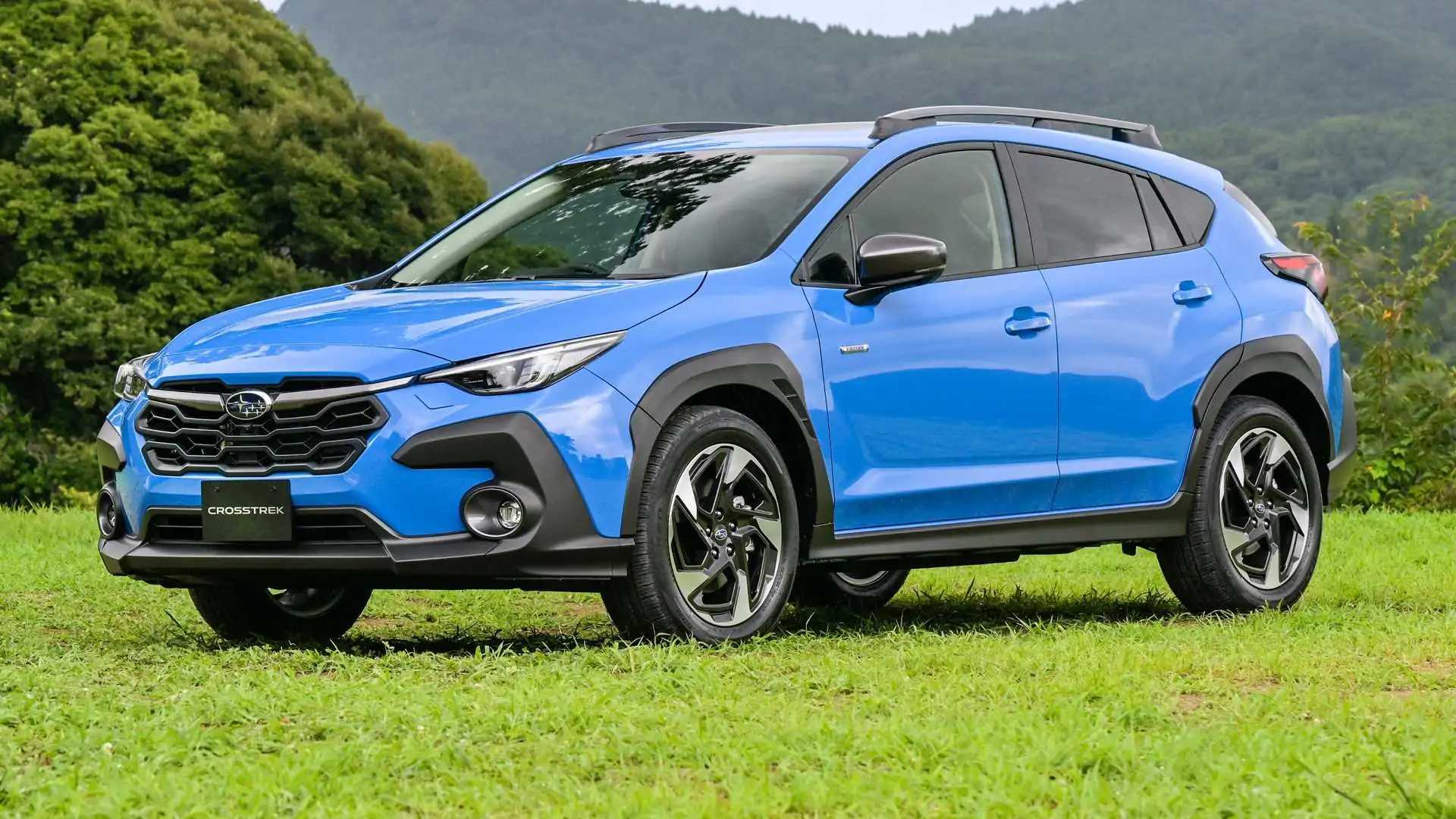
Lane centering assistance represents another area where the Crosstrek lags behind contemporary standards. Rather than actively maintaining position within the lane, the system provides basic lane departure prevention that intervenes only when approaching lane boundaries.
The result is a wandering path that requires regular driver correction rather than the consistent centering provided by more sophisticated systems. On curves of any significant degree, the system typically requires driver intervention, limiting its effectiveness to relatively straight highway sections.
The human-machine interface further reveals the system’s age. Visual feedback about system status is limited to small icons in the instrument cluster with minimal contextual information.
Controls for adjusting following distance and speed settings feel dated compared to the more intuitive implementations found in newer competitors. The system also provides limited customization options, with fixed following distances that cannot be fine-tuned to individual preferences or traffic conditions.
Perhaps most notably, the Crosstrek’s system shows minimal evidence of software refinement despite its longevity in the market. While hardware limitations are understandable in a value-oriented vehicle, the lack of algorithmic improvements through software updates suggests that ongoing development has not been prioritized. Behaviors that could be addressed through calibration adjustments, such as unnecessary braking sensitivity or abrupt transitions, remain unchanged across model years.
While the Crosstrek’s EyeSight system provides basic adaptive cruise control functionality and contributes to the vehicle’s strong safety ratings, its implementation now feels dated compared to the more refined and capable systems offered by competitors at similar price points.
The system’s fundamental architecture, reliant solely on stereo cameras, creates inherent limitations that software refinements alone cannot overcome.
5. Ford EcoSport
The Ford EcoSport’s adaptive cruise control system exemplifies how significant the disparity can be between basic implementations and industry-leading technology, even within a single manufacturer’s lineup.
While Ford offers sophisticated driver assistance in vehicles like the Mustang Mach-E and F-150, the EcoSport’s system feels distinctly outdated and compromised, suggesting it received minimal development resources.
The most immediate limitation becomes apparent in the system’s operating parameters. The EcoSport’s adaptive cruise control functions only above approximately 20 mph and automatically disengages when vehicle speed drops below this threshold, requiring manual driver intervention.
This significant restriction essentially renders the system useless in urban environments or congested highways, precisely the scenarios where driver assistance would provide the greatest benefit in reducing fatigue.
Unlike Ford’s more advanced systems that can operate from highway speeds down to a complete stop, the EcoSport forces drivers to constantly toggle between assisted and manual control in variable traffic conditions.
The hardware implementation further constrains performance. The EcoSport utilizes a basic single-radar sensor with limited range and field of view, significantly reducing the system’s ability to track multiple vehicles or detect objects entering its path from adjacent lanes.
This hardware limitation manifests in delayed responses to vehicles merging ahead, often resulting in more abrupt braking than necessary once the system finally detects the new obstacle.
The radar’s modest capabilities also compromise performance in adverse weather conditions, with significantly reduced functionality in heavy rain and potential false alerts from accumulated snow or slush.
The system’s behavior when following other vehicles reveals additional shortcomings. Acceleration and deceleration profiles lack the refinement seen in Ford’s more premium offerings, with a tendency toward abrupt changes rather than smooth, progressive adjustments.
The EcoSport maintains only a single fixed following distance that cannot be adjusted to match traffic conditions or driver preferences, further limiting the system’s flexibility. This one-size-fits-all approach often creates distances that feel either excessively large in flowing traffic or uncomfortably close when traffic suddenly slows.
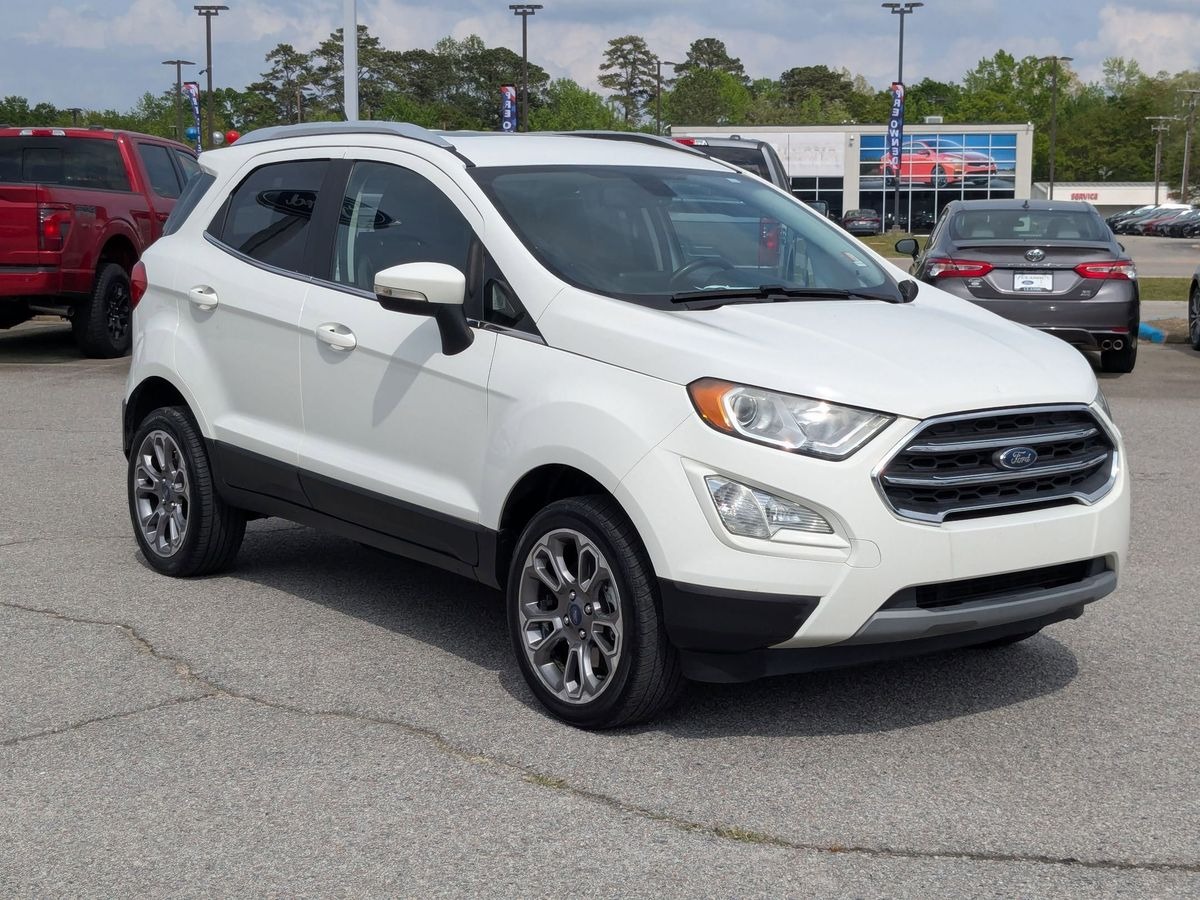
The absence of true lane centering capability further diminishes the system’s utility. Unlike more advanced Ford vehicles that offer Lane Centering Assist, the EcoSport provides only basic Lane Keeping Alert with minimal steering intervention when approaching lane boundaries.
This rudimentary implementation requires constant driver adjustments rather than providing the reduced steering workload that more sophisticated systems deliver. On anything but perfectly straight highway sections with clear markings, the system requires near-constant driver attention and correction.
The human-machine interface compounds these limitations. System controls are integrated into the multifunction steering wheel with minimal dedicated buttons, requiring drivers to go through multiple menu layers for basic adjustments.
Visual feedback about system status is limited to small icons in the instrument cluster that provide little context about current operation or potential limitations. This interface opacity makes it difficult for drivers to build appropriate trust in the system’s capabilities or anticipate when intervention might be necessary.
Perhaps most telling is the complete absence of over-the-air update capability for the system. While Ford has embraced this technology for its newer vehicles, allowing continuous refinement and improvement, the EcoSport’s driver assistance features remain static from the factory.
This lack of updateability means the system cannot benefit from the algorithmic improvements and bug fixes that have become standard practice among manufacturers who prioritize driver assistance technology.
While the EcoSport technically offers “adaptive” cruise control, its implementation feels more like a reluctant concession to market expectations rather than a thoughtfully engineered feature.
For drivers seeking meaningful assistance in reducing fatigue during regular commuting, the system’s significant limitations render it more of a marketing checkbox than a practical driving aid.
Also Read: 5 Efficient AWD Cars and 5 That Trade Power for MPG

